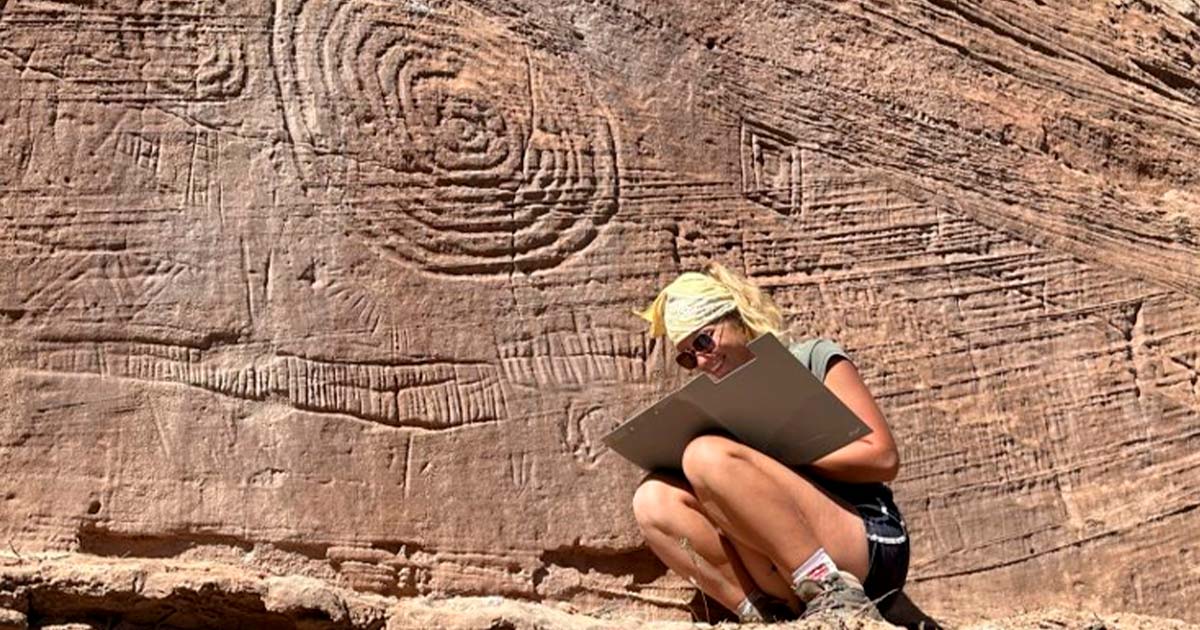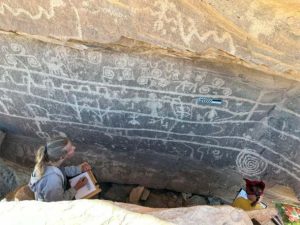Petroglyph Findings Provide a Significant Advance in the Study of Pueblo Culture

In a significant archaeological development, a team from the Jagiellonian University (JU) has made groundbreaking discoveries regarding the ancient Pueblo culture along the Colorado-Utah border. This Polish team, one of the few European groups active in this region, has been exploring the area for over a decade, unraveling the mysteries of the 3000-year-old Pueblo culture.
The team’s research is focused on the Castle Rock Pueblo settlement complex, located on the Mesa Verde plateau, a region renowned for its Pre-Columbian settlements and rock art. The Pueblo communities, known for their advanced building techniques and artistic creations, developed multi-story stone houses, intricate jewelry, and ceramics with distinctive black-on-white motifs.
These artistic expressions, alongside their advanced architectural and agricultural practices, reflect a rich and complex society that has left a lasting imprint on the region’s cultural heritage.

Ancient Skeletons Reveal Cataclysmic Violence in Mesa Verde
10,000 Years of Landscape Architecture by the Ancient Cultures of Utah
Some of the team investigating Castle Rock formations in Mesa Verde National Park, Colorado/Utah. (Jangiellonian University)
Unknown Petroglyph Galleries Discovered
This year’s findings at the Castle Rock Pueblo, which have just been reported by the Jangiellonian University team, headed by Prof. Radosław Palonka, have led to the discovery of vast galleries and petroglyphs from various historical periods, challenging previous perceptions of the settlement area.
The oldest petroglyphs, dating back to the 3rd century AD during the Basketmaker Era, depict warriors and shamans. The 12th and 13th-century petroglyphs feature complex geometric shapes, while the 15th-17th century marks the presence of the Ute tribe with large narrative hunting scenes. Additionally, modern elements like the 1936 signature of cowboy Ira Cuthair have been found, highlighting the ongoing evolution of rock art in the region.

Vandals Deface ‘Birthing Rock,’ 1000-Year-Old Rock Art in Utah
Hundreds of ancient children’s shoes found in Utah cave shed light on little-known culture
Examining some of the pueblo culture petroglyphs. (Jangiellonian University)
Prof. Palonka’s research has led to the discovery of previously unknown petroglyphs about 800 meters (2625 ft) above the cliff settlements, encompassing spirals up to one meter in diameter. These petroglyphs, used for astronomical observations and calendar determinations, have reshaped understanding of the population size and religious practices in the 13th century.
Using Both Hi-tech and Old Knowledge Research Methods
Collaborating with the University of Houston, Texas, this year’s LiDAR surveying has provided high-resolution mapping of the area. The university, known for its expertise in LiDAR research, aims to uncover new sites from earlier periods, enhancing the understanding of the region’s history.
The JU team’s engagement with local Native American communities, including the Hopi and Ute tribes, has been integral to the project. Tribal archaeologist Rebecca Hammond and other community members have assisted in interpreting rock art and building functions. Their insights will be featured in a multimedia exhibition at the Canyon of the Ancients Visitor Centre and Museum, showcasing the JU team’s findings.
Prof. Palonka believes that the Mesa Verde plateau still holds many secrets, and continued exploration could lead to more sensational discoveries about the ancient Pueblo culture.